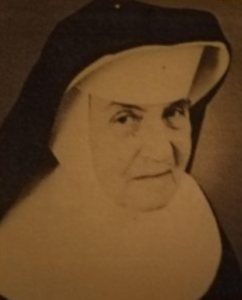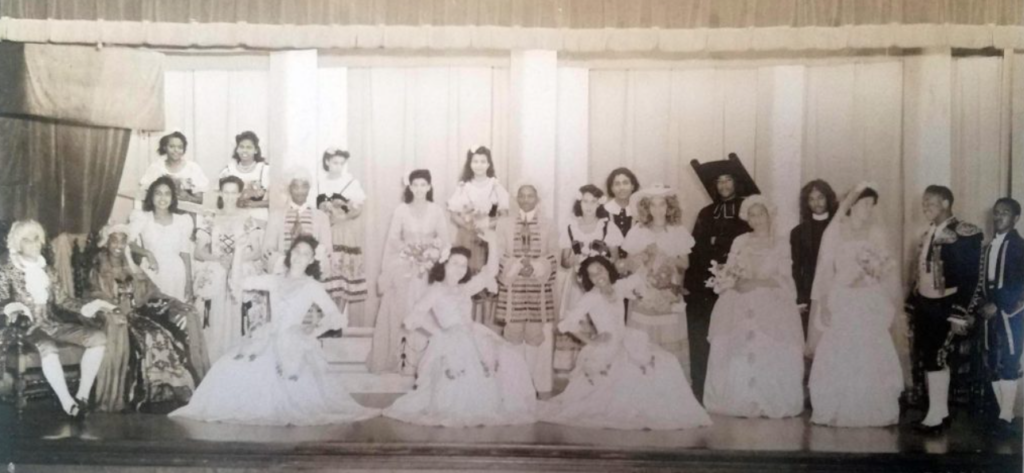“What a lady, I would have loved to have met her. You need to read the entire story!” wrote SSWDA Genealogist Jeff Westcott when he posted a 1981 article in the Times Picayune about Sister Mary Elise Sisson, who brought opera to Xavier University, integrated audiences in New Orleans, and taught acclaimed Black opera stars and musicians such as Annabelle Bernard and Debria Brown.
Sister Mary Elise (1898 to 1982), an opera star in her own right before professing with the Sisters of the Blessed Sacrament, was a descendant of Stukely and Juliana Westcott in the 12th generation: Mary Elise12 Sisson, John W11 Sisson, Oliver W10 Sisson, Oliver9 Sisson, Elizabeth8 Bliven, Nathan7 Bliven, Jr., Nathan6 Bliven, Freelove5 Barker, Freelove4 Bliss, Damaris3 Arnold, Damaris2 Westcot, Stukely1 Westcott.
Sunday, April 12, 1981 – The Times-Picayune, New Orleans, Louisiana
By PHILIP STELLY
“What captive thing could up to God, through all its darkness grope… and sing songs of sorrow, love, faith and hope,
songs unsurpassed among the folk songs of the world,
and in their poignancy and beauty unequalled?” –James Weldon Johnson

Sister Mary Elise Sisson
Sister Mary Elise Sisson didn’t know anything about segregation until she came to New Orleans.
“I remember coming down here in 1934 totally unaware of the significance of segregation and the situation here,” she said. “Segregation was a term I was familiar with up North, but ignorant of the effects of segregation.”
The then-new chairman of the music department at Xavier University quickly learned.
“I wanted to go downtown, and some of my students were traveling on a streetcar, and it was impossible to sit with them. That was segregation.”
Sister Elise had a ruder awakening when it came to the field she loves so dearly – opera. Her students were not allowed to go to Municipal Auditorium or concert halls to hear other musicians or take an active part in musical performances.
Sister Elise was quickly frustrated by the collision of art and politics. She resolved her internal conflict in favor of art.
“I determined, that, as far as I was able to provide it, music students at Xavier would have every experience they couldn’t have downtown.”
Armed with this mandate, Sister Elise began building an operatic tradition at Xavier at a time when most predominately white universities lacked opera training.
Under her aegis, Xavier produced the entire classical repertoire, among them “La Boheme,” “Il Trovatore,” “Cavalleria Rusticana,” “Aida” and “Tosca.”
The operas were like a magnet attracting many talented students. The operas have launched the careers of singers from humble beginnings to the Metropolitan Opera and the New York City Opera. Four of Sister Elise’s students, Annabelle Bernard, Debria Brown, Raeschelle Potter and Gail Gilmore now perform on the opera stages of Europe.

Mezzo-soprano Debria Brown rehearses with Sister Mary Elise at Xavier University (photo: CreoleGen.org)
Even when she retired from Xavier in 1969, Sister Elise, 84, continued to expand the musical experiences of black musicians by establishing two opera companies, Opera-South in Jackson, Miss., and National Opera Ebony, based in Philadelphia.
For her efforts, she was honored last month at the 10th anniversary celebration of Opera-South. New Orleanians familiar with her influence on the city’s musical life and those discovering her for the first time paid tribute Friday to Sister Elise at the St. Augustine High School band concert.
The band is directed by a student she recommended for the job, Edwin H. Hampton.
Sister Elise was ordered to Xavier by Mother Katherine Drexel, founder of the university and the Sisters of the Blessed Sacrament congregation.
From her first days at Xavier, the former opera singer attracted students to her auditions. “I was simply overwhelmed by the number of people who came in. Beautiful voices, fine personalities. So many of the students who came to meet me were in other fields and not in music. I suddenly realized that here was a university with about 500 people and 450 wanted to sing in the chorus.”
In 1934, she presented a program in collaboration with the English department and the big attraction of the evening was a scene from “Carmen.” “That went over thrillingly. The girls had Spanish shawls they borrowed from their grandmothers. I think the cost was $10 for costumes and that was the extent of it.”
A full-fledged production of “Faust” followed in 1935, but with piano accompaniment only. In 1950, university departments collaborated to build a stage in the gym for a production of “Aida.”

Cast of a 1944 production of the Marriage of Figaro (photo: CreoleGen.org)
Barriers that kept Xavier students out of the Municipal Auditorium began to fall as blacks and whites filled the Xavier gym for an opera.
Sister Elise left Xavier in 1959 to teach at an academy in Virginia. When she returned, she began a cultural program for young adults, but her attention soon returned to opera.
She founded Opera-South. The new company began with a production of “Aida” in 1971.
She went to Philadelphia in 1973 where she and several friends established National Opera Ebony, a company to showcase black musical talent.
The company has established a branch in New York and plans to include other cities in the national company.
Sister Elise said she hopes she has planted a seed for the continued flowering of American opera.
“I have tried to remove the obstacles to grand opera. Remove the obstacles, replace it with people on the stage who can be related to, remove that class distinction, and there you have it.”
For more on Sister Mary Elise Sisson, see “A Life in Opera (Part 1) Sister Mary Elise of Xavier University” at the Creole Genealogical and Historical Association website (CreoleGen.org).
